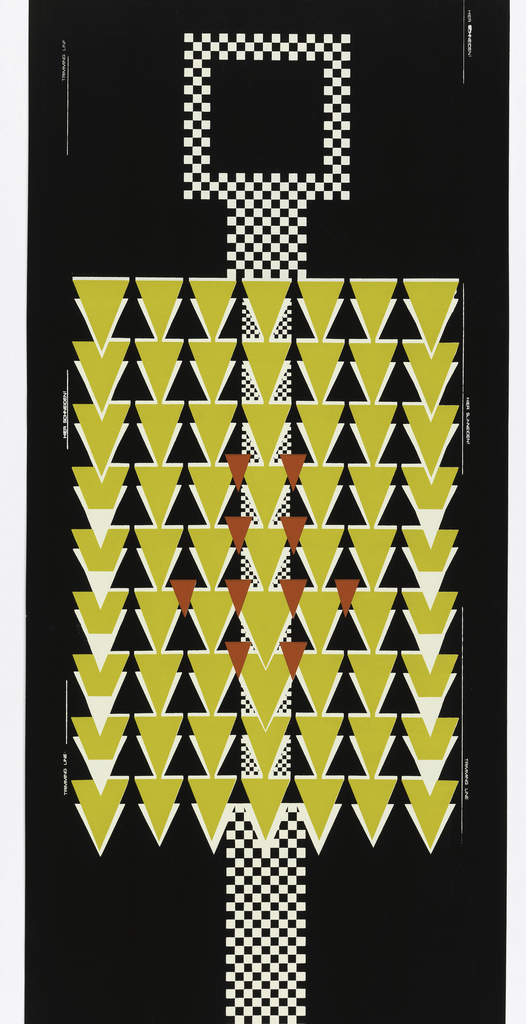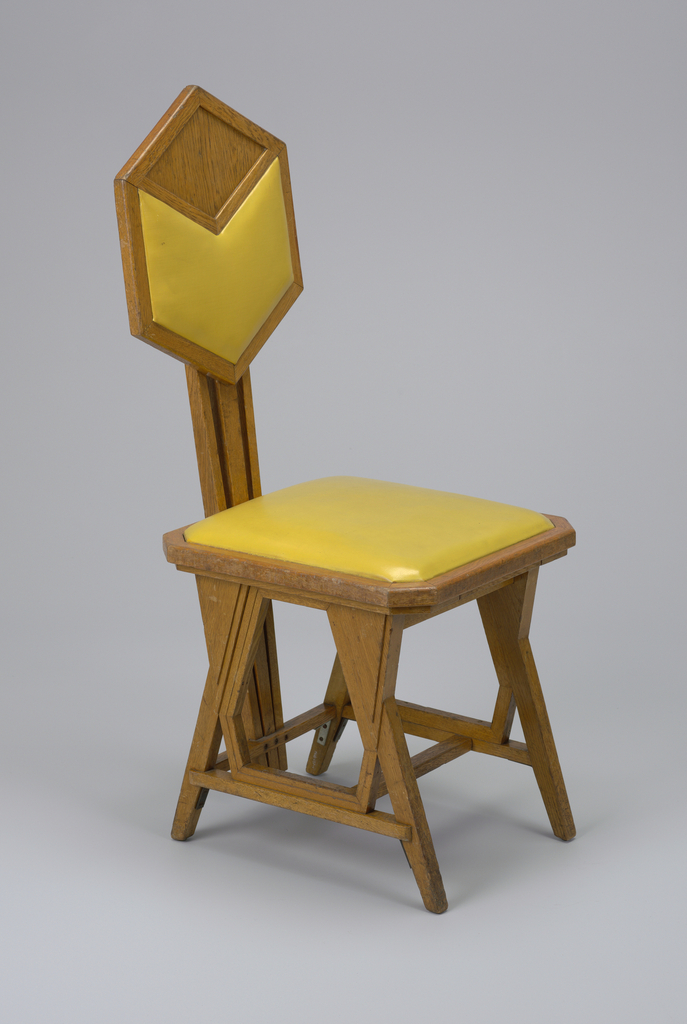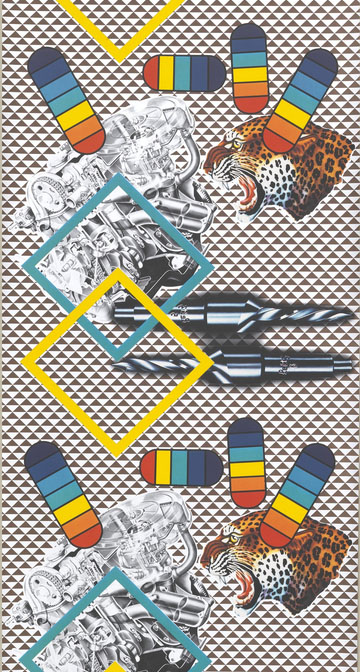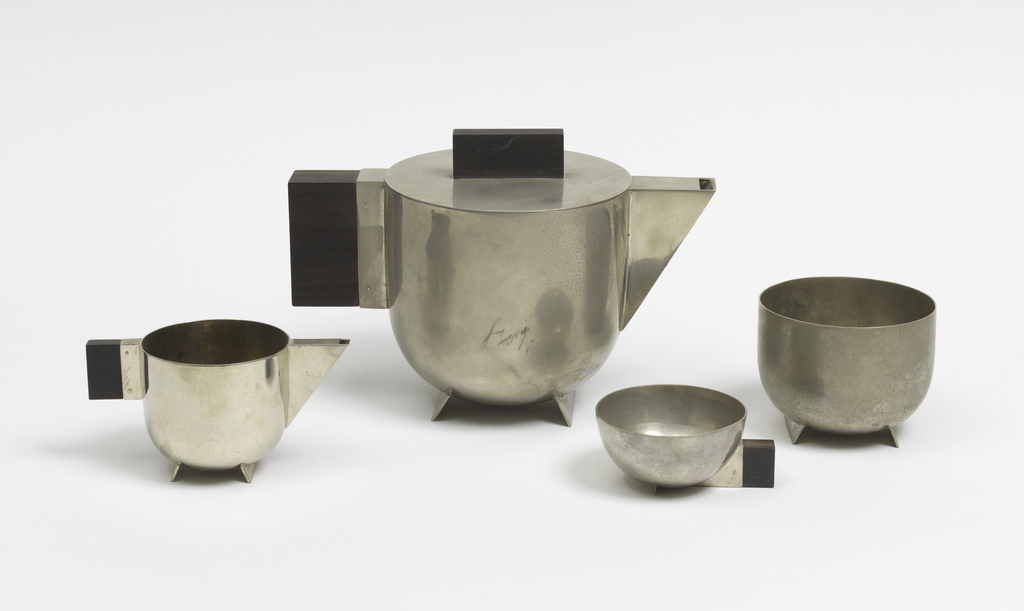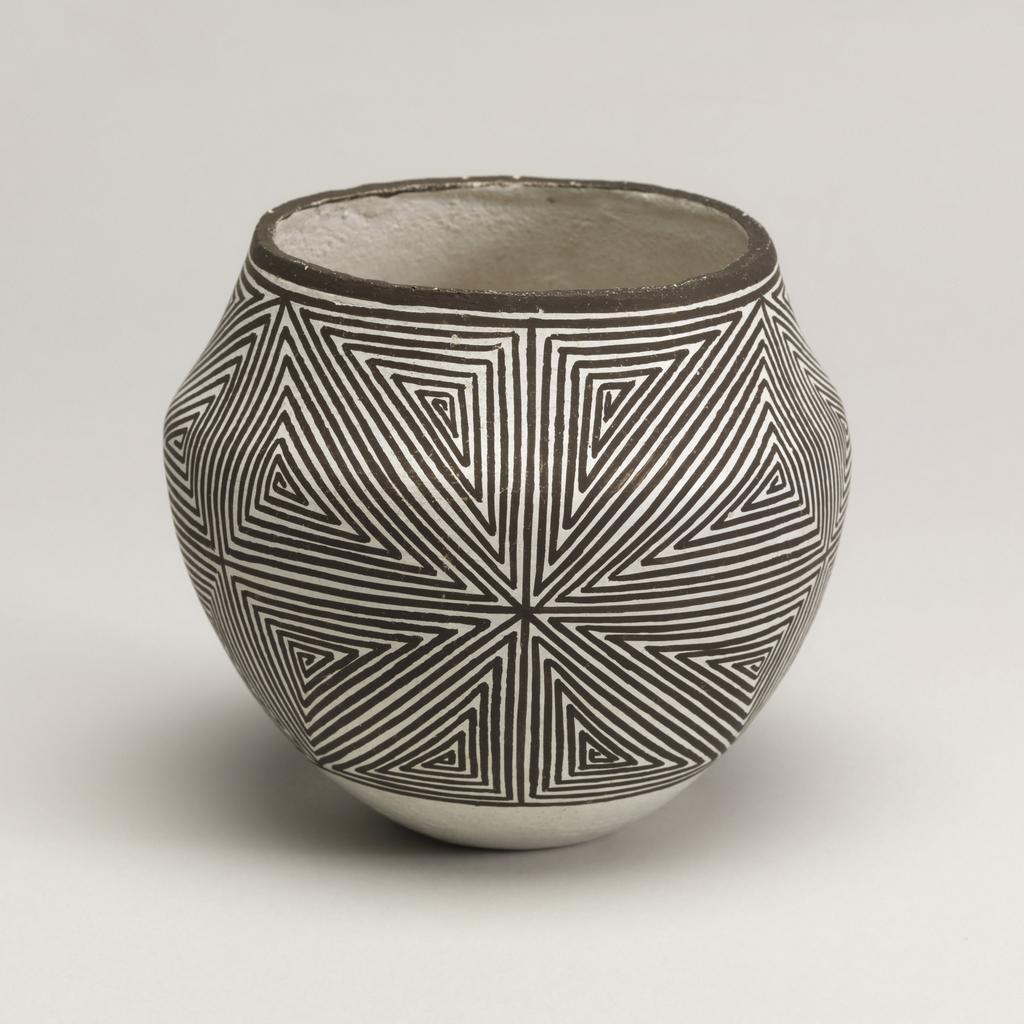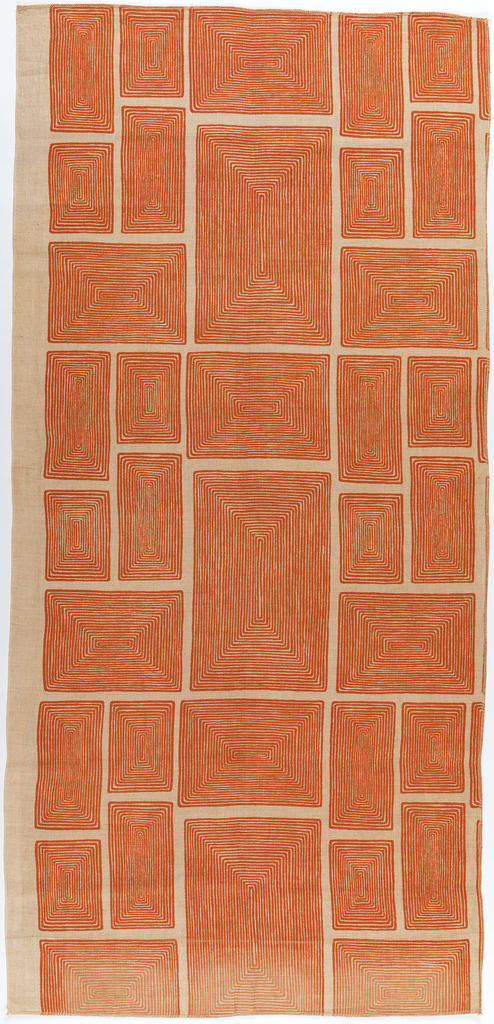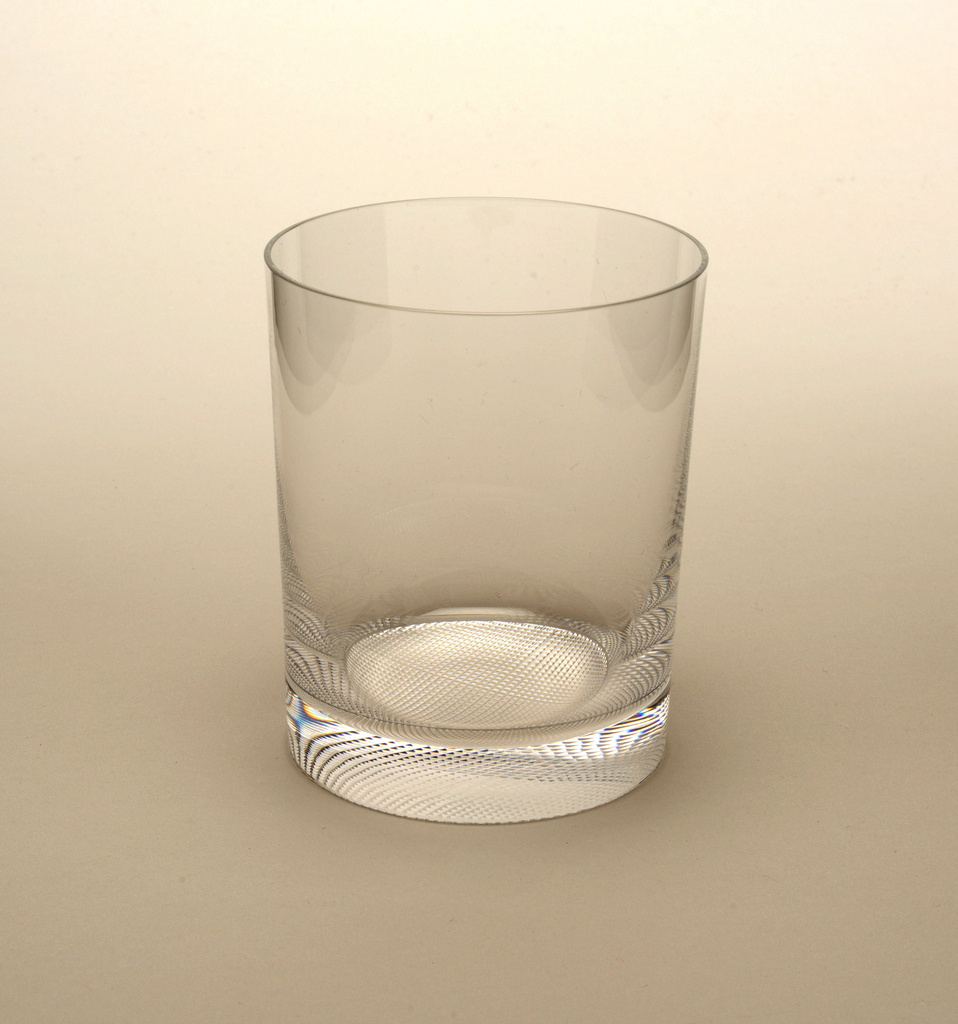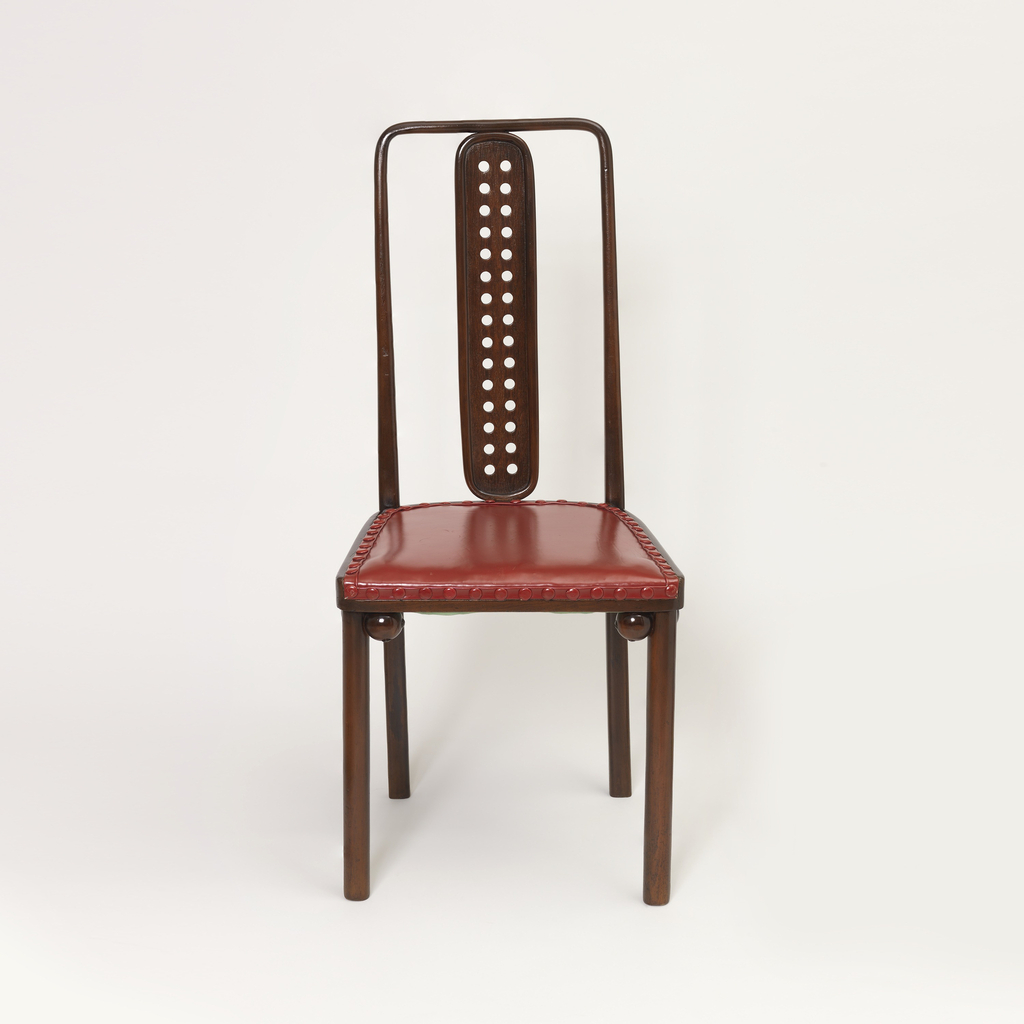Though this paper dates from the 1960s, it is a reprint of an original design by Charles Rennie Mackintosh created in 1916. It was made for W.J. Bassett-Lowke, founder of a manufacture of model trains and construction sets, for the lounge hall of his house Derngate in Northampton. Mackintosh was an architect and designer known...
Echoing the larger artistic vision of Frank Lloyd Wright’s Imperial Hotel in Tokyo, this chair was designed for the hotel’s Peacock banquet room in the early 1920s. Amongst the 700 drawings that exist for the hotel, most are for its interior, showing how significant its design was.[1] The chair’s hexagonal back and square seat reflect...
This wallpaper by Peter Phillips was one of several designed by contemporary artists for the Marburg wallpaper company in the 1970s. Founded in 1845 in Marburg, Germany, the company is one of the oldest wallpaper producers in the country. Beginning in the 1920s, it became known for collaborating with contemporary artists to create papers, though...
The No. 2402 bowl, shown here in what the Fostoria Glass Company called “ebony,” is one of eight pieces of glass tableware designed by George Sakier in the museum’s collection. The bowl was made in 1930, just a year after Fostoria hired Sakier to be their main design consultant. The avant-garde look of this bowl...
This Austrian tea service was designed in a thoroughly modernist style. Forms have been radically simplified to their stark geometric essence. The pieces have no applied ornament, adhering to the principle of “form follows function”, one of the central tenets of modernist industrial design. Following the First World War, new economic and social conditions made...
Lucy Martin Lewis learned to make pottery from her great-Aunt and other women living in Sky City, a remote three hundred foot high sandstone mesa in Acoma Pueblo, New Mexico. Until the middle of the twentieth century, the community had no plumbing and pottery jars were necessary for hauling essentials to the waterless mesa. Pottery...
This printed textile, Campagna, by Angelo Testa epitomizes his distinct design vocabulary. Likely named after Testa’s friend, Paul Campagna, Testa designed it around 1950 for Knoll Associates. Campagna utilizes Testa’s preferred linear and geometric forms, commonly associated with his Bauhaus training. The hard edges of the concentric rectangles in this textile, however, have been softened...
The Austrian architect Adolf Loos (1870-1933) designed a set of drinking glasses in 1931 to be shown at the Exhibition of Interiors in Cologne. His intention was to display to the public how an updated table setting should look. Loos, who was known to have a simplified, rectangular and rectilinear design aesthetic chose the well-known...
A ubiquitous figure in design history, Josef Hoffmann had a career that spanned more than 50 years. The Austrian architect-designer created this chair for the dining room of the Purkersdorf Sanatorium, located just outside Vienna, and built between 1904 and 1906. Hoffmann designed both the sanatorium’s austere exterior and much of its interior. Hoffmann worked...
